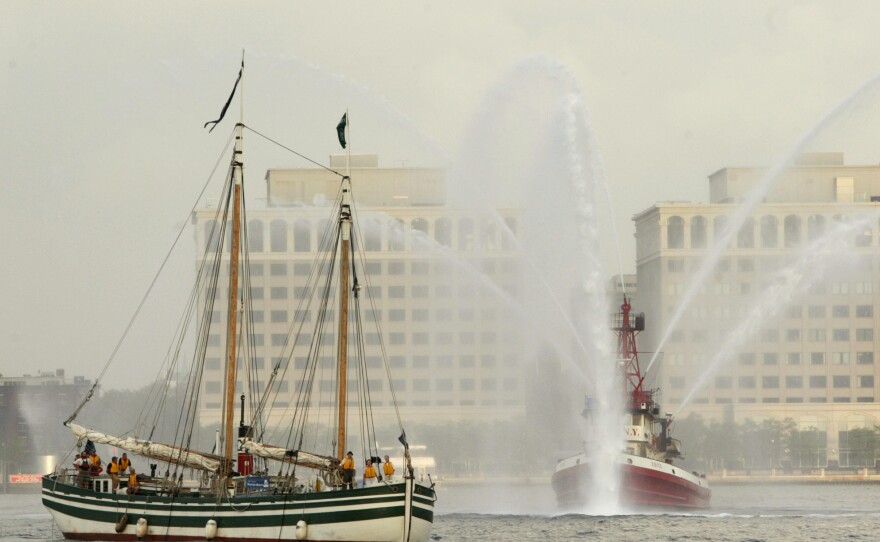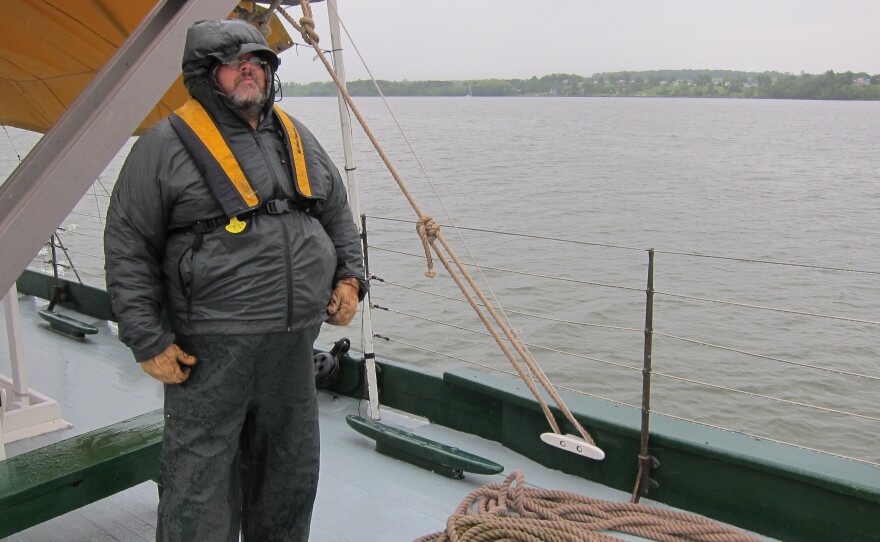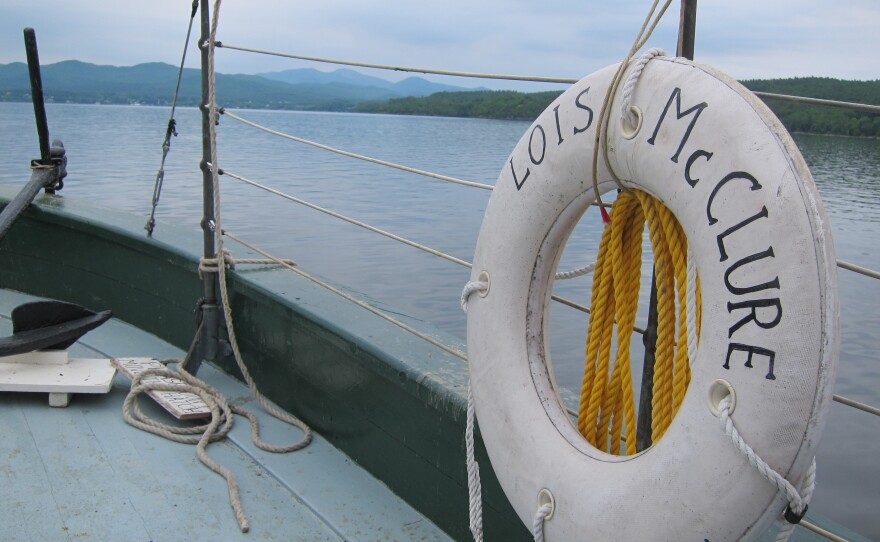

The Lois McClure, a replica of an 1862 canal schooner, is also a floating museum. This summer she's sailing historic waterways in Vermont, New York, Ontario and Quebec to commemorate the War of 1812.
The Lois starts from her berth at Lake Champlain Maritime Museum in Vergennes, Vt. First mate Tom Larsen, a strapping guy with a long ponytail and glasses, pulls hand-over-hand on a thick white rope, getting the Lois onto the water for a four-month voyage. A tugboat comes up alongside the schooner, ties a line and tows her out onto Lake Champlain.
Art Cohn, co-founder of the Lake Champlain Maritime Museum, says canal schooners like the Lois McClure were basically the 18-wheelers of their day. They were sailboats that could also be towed through the canal systems.
"These boats were blue collar, work-a-day trucks from their generation," Cohn says.
Canal schooners carried lumber, coal, and stone. They'd even bring agricultural
products like hay and apples down to New York City.
But the railroad industry put a lot of boats out of business. By the 1920s, canal schooners were mostly obsolete, and their history was forgotten.
But then museum divers found a canal schooner wreck on the bottom of Lake
Champlain. They decided to build a replica, and take it on tour.
"As a historian, as someone who wants people to engage in their history, the boat was magical in that it provoked that," says Cohn. "You walked on board, you were interested, you wanted to know."
Last year, the Lois McClure set off on a three-year project to mark the 200th anniversary of the War of 1812. The Lois is a cargo-carrier, built long after that conflict, but the canals she sailed were built by peacetime leaders who thought the country needed waterways to move supplies in case hostilities resumed.
Crew member Len Ruth says that says working on the boat makes that history very real.
"Just feeling what it was like for the people who lived on these boats," he says. "A really good way to do that is actually to live on board and do things the way they did as much as you can."
The crew spends the night on the boat, and the next morning, the weather turns chilly with a pouring rain. But no one complains.
Up on deck, Ruth wears waders and pulls his rain coat all the way down over his glasses. He says canal boat sailors from 1862 probably had rain like this, too.
"They would've had to put up with it when it happened just as we do, so in a way we are real mariners," he says.
Copyright 2013 NPR. To see more, visit www.npr.org.






